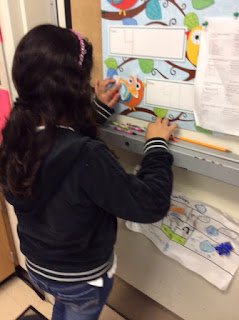It's probably because I'm an animal lover. Ever since I was a little girl, I've been crazy about animals and basically drew some sort of creature on every paper I turned in for homework. Animals are so unique, and it's mind boggling to learn about all the amazing things they can do, especially when it comes to their adaptations.
In order to get my students to really understand plant and animal adaptations, I like to start with a Depth and Complexity frame. I actually designed this activity for a formal observation I had with my principal! As mentioned in my last post, ANY student can use a frame, and I truly believe it aids in student comprehension as well as verbal communication skills.
 |
| Adaptation Depth and Complexity Frame |
1. Read an article or chapter in your science textbook about animal and plant adaptations. If students are able to write on the information, have them notate and highlight/underline information they find important.
2. Discuss the top portion of the frame which is asking students to identify the two types of adaptations. Students also must give examples of each using language structures.
3. As mentioned in my last post, students work in table groups to each share a detail about these adaptations using an All Write Round Robin. Students also use text evidence to answer the question.
4. Move on to the next portion of the frame (language of the discipline). This is my very favorite part! Students work with a partner, where one acts as a predator and the other as its prey. Students use multiple perspectives to discuss how they feel about their partner's adaptations. Then, they have to write from their partner's perspective. Later on, students act this out in front of the class!
5. Students now move on independently to ask any unanswered questions they still have.
6. Lastly, for those early finishers, students create their very own animal and must include the adaptations it would possess. Students love this part because they get to illustrate their very own organism.
You can find this Adaptations Depth and Complexity Frame by clicking the link below:
7. Take it a step further, and log on to http://www.buildyourwildself.com/ where students can build their human self, and then add their favorite animal parts. The kids loved this site!
 |
| Build Yourself Wild |
Neither one of these students were GATE students, and they still did a great job!
Thanks to Pinterest, I found this highly entertaining butterfly camouflage activity! It was so much fun! I found the template on Pinterest, but the website noted is firstpalette.com. We kept these butterflies up for Open House, and then had the students take their families around on a scavenger hunt to see how many butterflies they could find.
Something fun and hilarious we did was act out our science vocabulary, so kids could experience what it might be like to camouflage or use mimicry. We were all laughing hysterically!
For homework, the kids created their own picture in which they hid camouflaged organisms. We then performed a Mix-Pair-Share, so students could share their hidden pictures with their peers.



















No comments:
Post a Comment